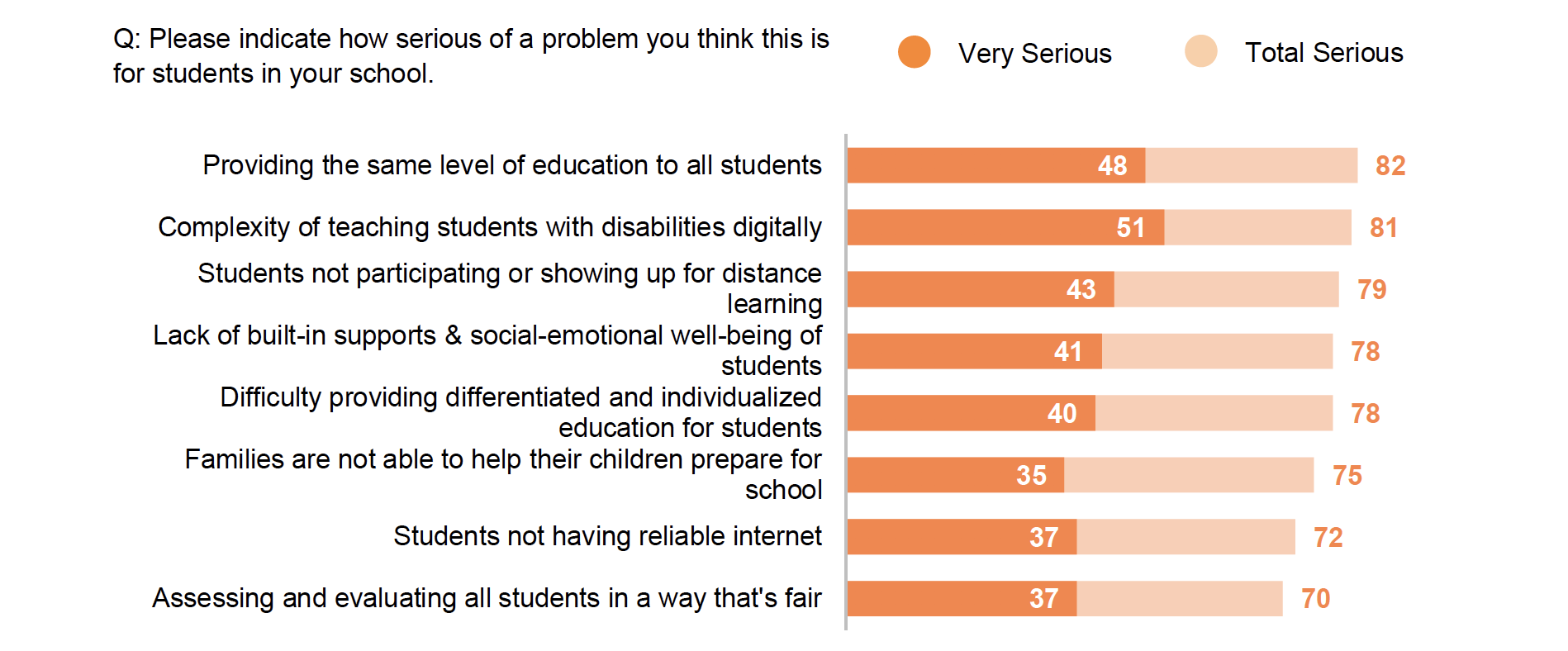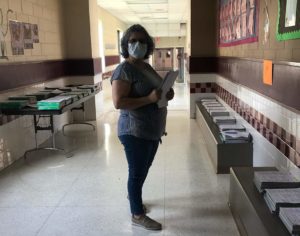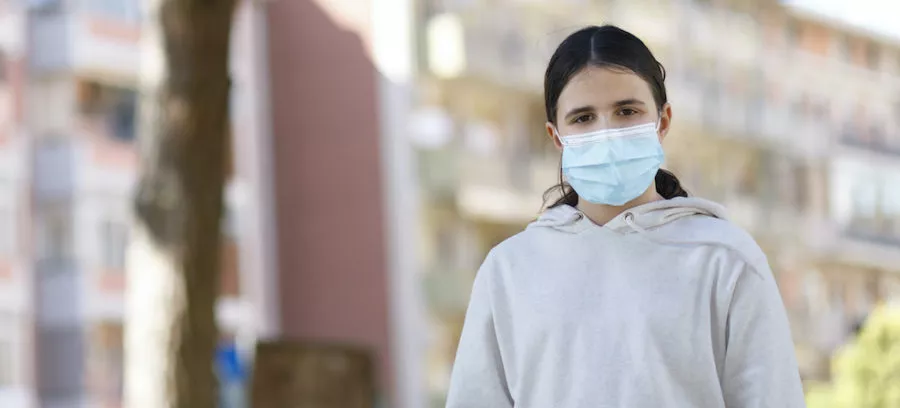Two months after the coronavirus pandemic forced schools across the country to close their doors, educators and students remain hunkered down in their homes teaching and learning remotely. Everybody is doing the best they can, but the challenges around distance learning are formidable - and will likely remain so until school re-opens. But what "back-to-school" this year will actually look like to students, educators and parents is shrouded in uncertainty.
What is clear is that the COVID-19 pandemic has exposed and exacerbated the inequities facing our most vulnerable students. According to a just-released National Education Association (NEA) survey, more than 80% of NEA members say that "providing the same level of education to all students" is a serious problem. Educators in high-poverty schools report lower class attendance, feel distance learning will be less effective for their students, and believe that closing the digital divide should be a top priority.

Compounding the current anxieties over distance learning and staying healthy is the widespread apprehension over what comes next. This week, as states begin to relax stay-at-home policies, the question of when and how to re-open schools took center stage. Dr. Anthony Fauci, in testimony to Congress, urged extreme caution in moving too quickly, reminding lawmakers that children are not immune from COVID-19.
The health and safety of students, their parents, and educators has to be main driver of any plan to re-open schools, said NEA President Lily Eskelsen García. "That is the first, second, and third priority."
"Educators want to go back to school. They're desperate to be in the same classroom, on the same bus, the same cafeteria as the students they serve," she said. "But we cannot go back to school in a cavalier way."
 'What If I Feel Unsafe?"
'What If I Feel Unsafe?"
On May 1, a Texas school district announced it would reopen schools in phases and require all administrators and education support professional to return to their positions to close out the school year. While some ESPs are eager to return, many are nervous that it’s too soon.
Eskelsen García addressed the challenges facing public schools during a press conference on Thursday. She was joined by National PTA President Leslie Boggs and NEA members Krystal Ash-Cuthbert, a fifth-grade teacher in Maine, and Lara Center, a school library aide in Colorado.
"Educators and parents are making their voice heard to ensure that students do not pay the price in this crisis," said Eskelsen García, who cited a recent NEA survey revealing that almost 90% of the public school parents approve of how educators are doing their job during the pandemic - higher marks than they gave their governor or mayor.
Eskeslen-García said re-opening the economy and communities can't happen until we re-open schools. And we can't re-open schools until students have what they need to be safe, to learn and succeed.
Which is why, as the country stands on the verge of possibly the worst economic downturn in its history, educators and parents are demanding that Congress act quickly. This week, the U.S House of Representatives unveiled the HEROES Act, which includes $100 billion in additional funding for K-12 and higher education. The bill would also provide more than $900 billion in state and local aid, which is desperately needed to help avoid massive budget cuts and prevent widespread layoffs of essential frontline workers, including educators. To mobilize support for this legislation, NEA is launching a major national advocacy campaign that will run through May 31. (Find out more at nea.org/covidaction.)
The HEROES Act also provides $1.5 billion to address the “digital divide,” which is impacting far too many students, especially in communities of color and rural areas. Due to the severity of the issue, NEA is calling on lawmakers to support at least this level of funding. Between 8.5 to 12 million K-12 students lack Internet access at home, making it difficult if not impossible to complete homework assignments. This so-called “homework gap” widened as an increasing number of schools over the past decade incorporated Internet-based learning into daily curriculum. The school closures in March only exacerbated the problem.
“It is critical that Congress address the needs of students, families and schools and specifically provide funding to ensure all students can connect to the internet to continue their education during this time," said PTA President Leslie Boggs.
Lara Center works in Jefferson County, Colorado, where one-third of the student population lives in poverty. She is alarmed that schools may be slammed by even more budget cuts before the district has fully recovered from the Great Recession a decade ago. Per-pupil spending in Colorado is roughly $2500 lower than the national average, and the state is already staring at a $3.3 billion budget shortfall due to the COVID-19 crisis.
Given the challenges students and staff will be facing when they return to school, budget cuts are unthinkable, Center said.
"Many students will return with emotional trauma and require a period of adjustment as they reintegrate into the rhythm of being back in school," she explained. "Adequate social and emotional supports for both staff and students will be needed. School counselors, social workers, nurses, health room aides, teacher aides will be necessary to navigate the new normal."
Take Action
The nation’s recovery from COVID-19 will run through our public schools, so we need to make sure we prioritize educators and students in coronavirus relief legislation. Tell Congress to prioritize dedicated funding to support public school students, educators, and communities in the next coronavirus relief package
Krystal Ash-Cuthbert teaches in Scarborough, a small coastal town in southern Maine with a gaping wealth gap. Recently, the school board was put on notice that it was facing anywhere from $3 to $5 million new budget cuts. "The disparities between the haves and the have-nots is growing exponentially during this crisis....The impact of those cuts would be devastating to my kids," Ash-Cuthbert said.
"At a time when we should be adding staff to help manage the coronavirus and keep students safe, we're cutting staff. We're talking about cutting academic supports, so we'll be taking them away from the students who need it the most. We're talking about cutting school bus drivers, who are critical in maintaining social distancing."
Ash-Cuthbert says that students who don't feel safe in school won't learn to the best of their ability.
"If I can't tell my students that they are safe with me, I won't be able to provide them with the best education possible....We need help. And if stimulus money from the federal government is what it takes, then that is what it takes. Because our kids are the most important thing here."


